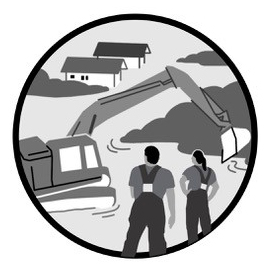Increasing natural events endanger people's life and welfare. The requirements for buildings, infrastructures and traffic routes also change with the climate change since they will be more exposed to natural hazards in the future. Opportunities arise from the reduced effort required for measures against snow, ice and cold


The following overview shows the most important risks and opportunities for addressing natural hazards based on the Confederation’s climate change analysis completed in 2017. Risks and opportunities for individual parts of the country are addressed in the section Major regions.
Legend:
[R] Risks of climate change
[C] Opportunities due to climate change
[?] Areas for which a clear assessment is not yet possible
The terms natural hazards/natural events in the present context include flooding (incl. debris flows, tidal waves caused by glaciers and surface water after heavy rainfall), rockfall, rockslides, landslides, forest fires as well as storm and hail.
[R] Increasing personal injury as the result of more frequent and more intense natural events
- Additional numbers of deaths, injuries and dependent persons
- Additional persons who are traumatized by damage-related events and need care
[R] Increasing property damage as the result of more frequent and more intense natural events
- Increased damage to buildings, vehicles and infrastructures (incl. protective structures)
- Additional economic damage due to limited accessibility and / or business interruptions
[R] Impairment of traffic infrastructures
- Heat-related disturbances of road and rail traffic
- More frequent restrictions on shipping, freight transport on rivers and lake accesses due to low water levels
[C] Decrease in damage tod maintenance costs due to snowfalls
- Reduced costs for winter service and road maintenance
- Decreasing damage due to avalanches
- Decreasing damage due to frost and snow pressure on buildings, infrastructures and traffic facilities
[?] Uncertain impacts
- Increase or decrease of damage to buildings and infrastructures due to storms or hail, including economic consequential damages due to limited accessibility and / or business interruptions
Further information
Last modification 19.02.2020
Contact
Federal Office for the Environment FOEN
Reporting and Adaptation Section
Papiermühlestr. 172
3063 Ittigen






